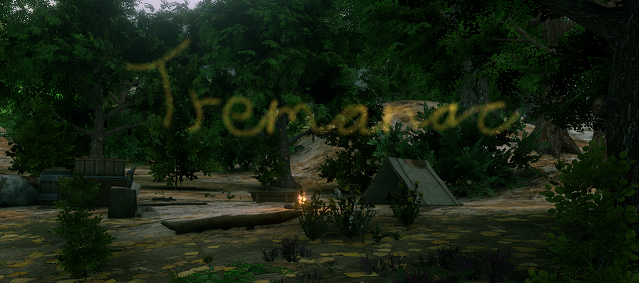Fieldling
The most commonly encountered halflings.
Many halflings today are descendants of those once known as fieldlings though there are relatively few who still hold to the full traditions once practiced by this culture. Survival has frequently relied on fieldlings fitting in with whichever group is most powerful in an area, so traditions have been dropped or adapted to avoid causing confusion or offence. In some cases the traditions have also been slowly lost as the younger generations have felt less need for them.
A few groups such as The Overlooked make some effort to preserve the traditions for when conditions allow for them to be fully shared and practiced.
History
Before the age of strife most fieldlings lived in small villages carefully hidden from view. While not as secretive as the gnomes they had little interest in attracting the attention of the larger species so tended to choose locations that were hidden from casual view. This approach worked well until the humans started creating the concept of countries where a ruler claimed vast swathes of land. This led to the rulers sending out forces to find out who lived in a claimed area so that they could be taxed or driven out. In some lands such as the Holy Kingdom of Caresnas the burden was reasonably light and the fieldlings were mostly left alone. However, in places like Balri the fieldling settlements were viewed as a source of slave labour. Those in Caresnas and similar lands maintained some of their traditions, but this grew harder as more young folk were lured to the supposedly easier and more fun life available in the big folk settlements. In comparison, the fieldlings enslaved in Balri clung to their traditions as much as possible as a means of both comfort and resistance. At times this resistance grew into outright rebellion and many fieldlings were lost during The Corpse Harvest When the slaves were finally freed and able tomove around freely again they were horrified by how much their kin had become like the big folk in their behaviour. This prompted a push to fully revive the original fieldling culture which proved quite successful as many of the northern halfling had grown disillusioned with the big folk ways and were looking for an alternative. Evenrually a kind of balance was arrived at with both the fieldling and town dwelling halflings welcoming those who wanted a change in lifestyle. Following the years of darkness the elves took steps to re-establish the fieldling culture as it suited what they wanted to see from a subservient race. While their intentions may not have been pure, it must be acknowledged that they did help preserve history, songs, stories, and rituals that would otherwise have been lost.Culture
Shared customary codes and values
We only want what the land can provide
A good fieldling is only interested in what their local community can provide. Food, drink, friends, and song are true treasures in life. Let the big folk chase after metal and stones, those things will never bring you comfort.A quiet life lets you appreciate what you have
Looking for excitement will only cause you to lose what you have. Excitement is just another word for trouble, and it rarely ends in trouble just for you. So think of your friends and neighbours and don't the attention of the big folk.The interesting is but two steps from your door
Whenever the curse of curiosity strikes, take a look around you and ask yourself - Have I learned everything there is to know about my home? before going looking to see what is over the next hill. There is more in our fields and homes than you could take in during two lifetimes so there is no need to go awandering.
Encompassed species
Terms and Phrases
Shoewearer - one who has become too like a big folk.Grown too big for their coat - one who is demonstrating an unseemly level of ambition.
Trying to grow a beard - one who is greedy for pointless things like gold or gems.



Comments